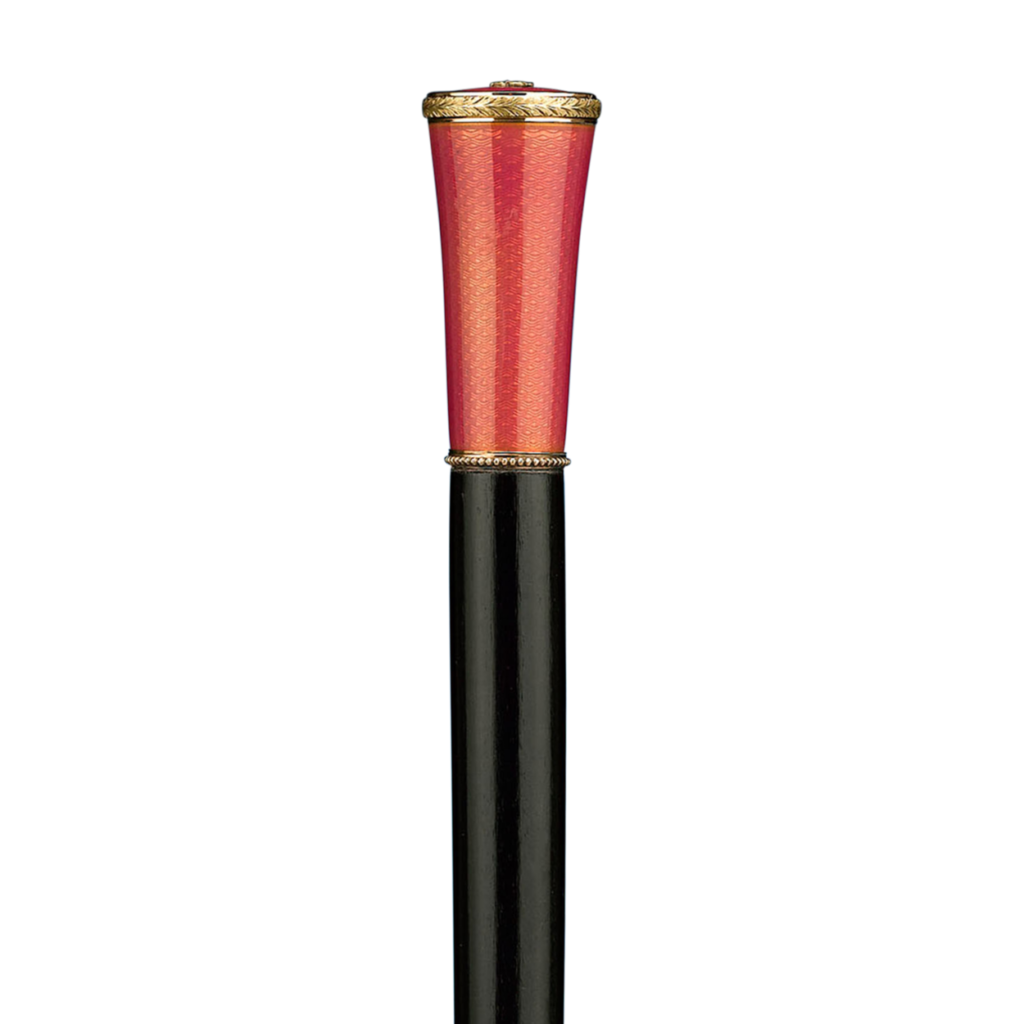
There was a time when no sophisticated gentleman or lady would dare be seen in public without a fine walking stick as part of their ensemble. Not to be used as a walking aid, these canes were intended to be “worn” as symbols of class, prestige and good taste.
The most desirable examples incorporated luxurious artistry and precious materials to display one’s social status, and perhaps the greatest makers of these exquisite objets d’art was the House of Fabergé.
As we’ll discover, Fabergé’s canes stand as a testament to the majesty of the Russian decorative arts. They imparted the very same passion for luxury seen in everything the firm created, from jewelry to silver and even the famed Imperial Easter Eggs.
The Design
When Peter Carl Fabergé took the reins of his father’s jewelry business in the 1870s, a stylistic shift occurred that changed the trajectory of decorative art. The “new” Fabergé put as much importance on the design and execution of an object as he did on the value of the material used. This step not only attracted the attention of the greatest craftsmen of the era, but also the favor of Czar Alexander III and his Czarina Maria. This relationship with the Russian royal family would endure until the Russian Revolution of 1917.
This shift is perfectly illustrated in the workmanship of Fabergé’s walking sticks. As these accessories were bastions of societal standing, each cane is a study in lavishness. Miniature masterpieces were wrought from gold, silver, enamel and precious gemstones by famed Fabergé work masters including Henrik Wigström, Mikhail Perkhin, Feodor Alexeievich Afanasiev and many others.

A drawing of cane handle designs from Fabergé workmaster Henrik Wigström's books. Fabergé's work masters, though bound by Carl's exacting standards, did impart their own distinct styles into their creations.
A World of Color
A hallmark of Fabergé canes is their use of color, which came in the form of delicate enameling and magnificent hardstones.
This cane (above) crafted between 1901-1903 is covered in brilliant transparent coral-hued enamel of the highest order. To achieve the desired delicate effects in his enameling, Fabergé turned to the French arts of the 18th century and revived an enameling technique known as guilloché. The process requires the metal surface to be delicately engraved and then covered with translucent layers of enamel which must be fired at high temperatures to attain the elegance Fabergé sought. His utilization of enamels blended with a variety of metal oxides allowed the artisan to achieve practically any color conceived by the imagination. A time-consuming and costly process, the result is unquestionably stunning.

Lush green nephrite jade was utilized in this cane (above) created by workmaster Henrik Wigström between 1908 and 1917. Fabergé was a master of hardstone workmanship, collaborating with the most talented lapidaries of the period to source the finest specimens for his creations, which ranged from incredible figural sculptures of animals and people to his exceptional canes. Nephrite found particular favor and importance with the Russian Imperial family, who had the sarcophagus of Czar Alexander III carved of solid nephrite. Fabergé’s canes utilized a varied catalog of hardstones and precious gems, including rock crystal, bowenite, chalcedony, lapis lazuli, amethyst, pearls, diamonds and so much more.
Value and Identification
It is important to note that the sticks upon which Fabergé canes are mounted are rarely original to the prized handle, and for good reason.
The Russian Revolution of 1917 brought an end to both the reign of the Imperial family and Fabergé. The new Soviet leadership would not tolerate the creation of any “objects of luxury,” forcing Fabergé into exile, and many of his creations were lost or destroyed. Those individuals who were lucky enough to escape the rioting and unrest took what precious objects they could on their person, namely small objets d’art of which canes can be counted. Today, existing Fabergé canes are mounted on sleek ebonized sticks that allow the grandeur of the handle to take center stage. This does not impact the value of the piece, which lies solely in the sumptuous handle.
What's a "Zolotnik"?
Fabergé's canes boast some of the most majestic gold and silver work ever created. When looking at marks on Russian precious metals, you'll notice they're not measured in karats (K), but rather zolotniks. The zolotnik was a Russian unit of weight used from the 10th through early 20th centuries to measure the fineness of gold, silver and platinum, and was equivalent to 4.2658 grams.
Here are some zolotnik conversions to make identification easier:
Gold Conversions
56 zolotnik = 14K gold
72 zolotnik = 18K gold
Silver Conversions
84 zolotnik = 875/1000 silver
88 zolotnik = 916/1000 silver

Bearing the mark of famed Fabergé chief workmaster Henrik Wigström, the zolotnik mark on this cane (far left) indicates '56 zolotniks' or 14K gold.
Cane or Parasol?
Fabergé also crafted equally resplendent parasols for the elite that were made to the same exacting standards as every other precious object created in the firm’s workshops. But just the same as with the canes, Fabergé parasol handles are rarely, if ever, attached to their original parasols, making it difficult to differentiate the two.
So, how can you tell them apart? It’s all in the diameter!

Fabergé cane handle (left) compared to a Fabergé parasol handle (right). Note the difference in the width of the base, or mount, of the handle. Parasols didn't have to support weight and were mounted on narrower stems.
Since parasols were not intended to carry weight like a cane, their “stems” were finer and more narrow compared to that of a walking stick. To find out if your piece is a Fabergé cane or parasol handle, measure the diameter of the mount, or the spot where the handle would be attached to the stick. If it’s less than 1/2–inch, it’s a parasol, if it’s more, you have a cane!
Explore our current selection of rare and remarkable Fabergé Canes




